'Railroading encompasses everything in the world': Austin history preserved with model trains
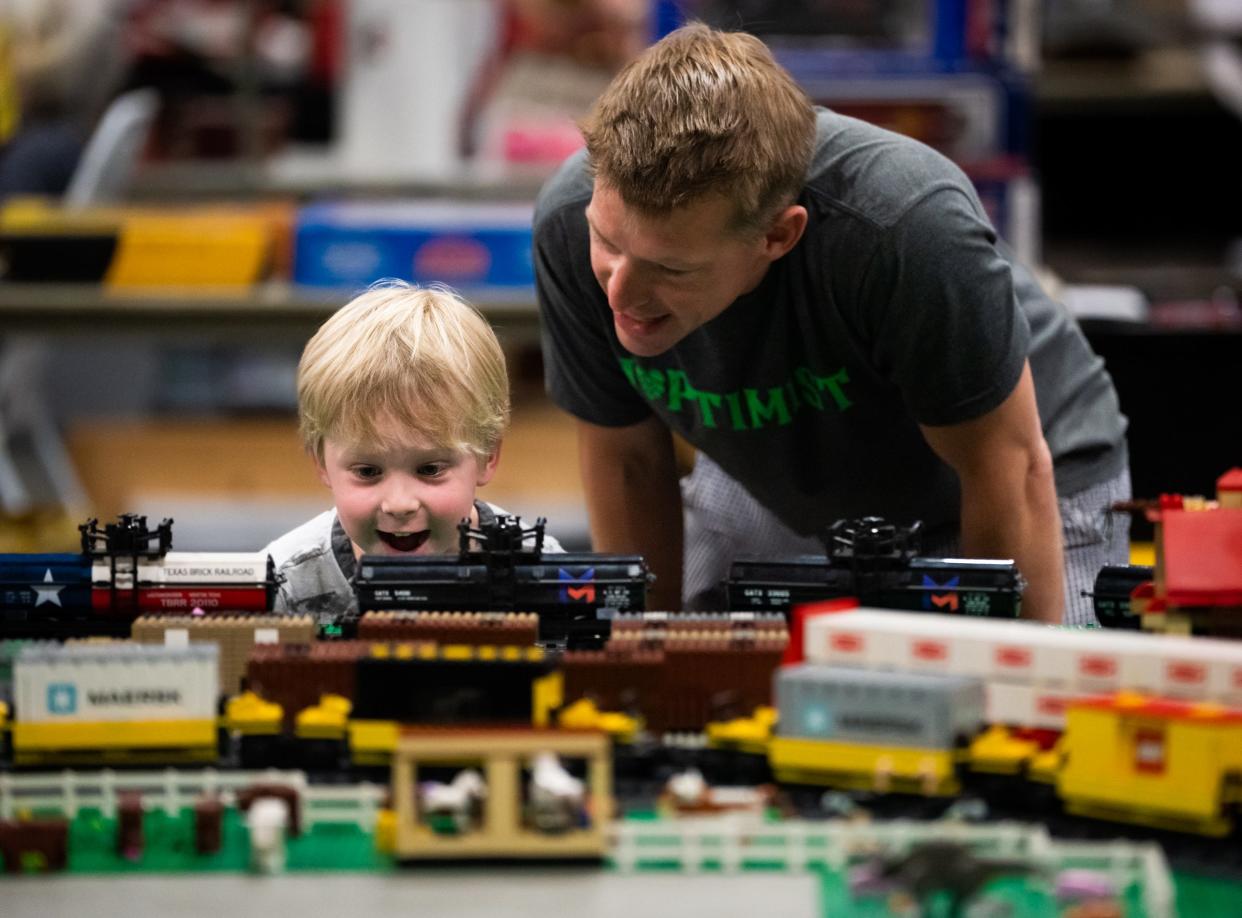
Nobody looks bored at a model train show.
Some people stare intently at crisscrossing objects in motion. Others build or fix things with the analytical skills of an engineer.
Still others explain the details of their intricate scenery, tracks and trains, some created over months, years or decades.
It's a cosmos all its own.
More: The secrets behind two old train stations on Springdale Road
In May, I spent a chunk of one day wandering the Austin 2023 Train Show at the Palmer Events Center. Earlier in the year, I attended the regular assembly of the Austin Model Railway Society at the Hope Presbyterian Church gym in Northwest Austin.
As a rule, club members are soft-spoken and good-humored about their youthful hobby.
They are also serious about getting the history right.
Consider this: Once the members of the Austin Model Railway Society set up their main layout, which is based on real buildings along historical tracks in Austin and nearby Taylor, at one time a railroading center, they put their trains into motion around this reduced-scale world, where they eventually perform simulated functions like loading and unloading cargo.
On a schedule. Not just any schedule. At its most serious, this whole dance of coming and going trains on multiple tracks can be timed to historical railroad schedules.
That's hardcore.
"Railroading encompasses everything in the world," says Riley Triggs, past president of the Austin Model Railway Society. "You can either come here to escape the world or to understand the world."
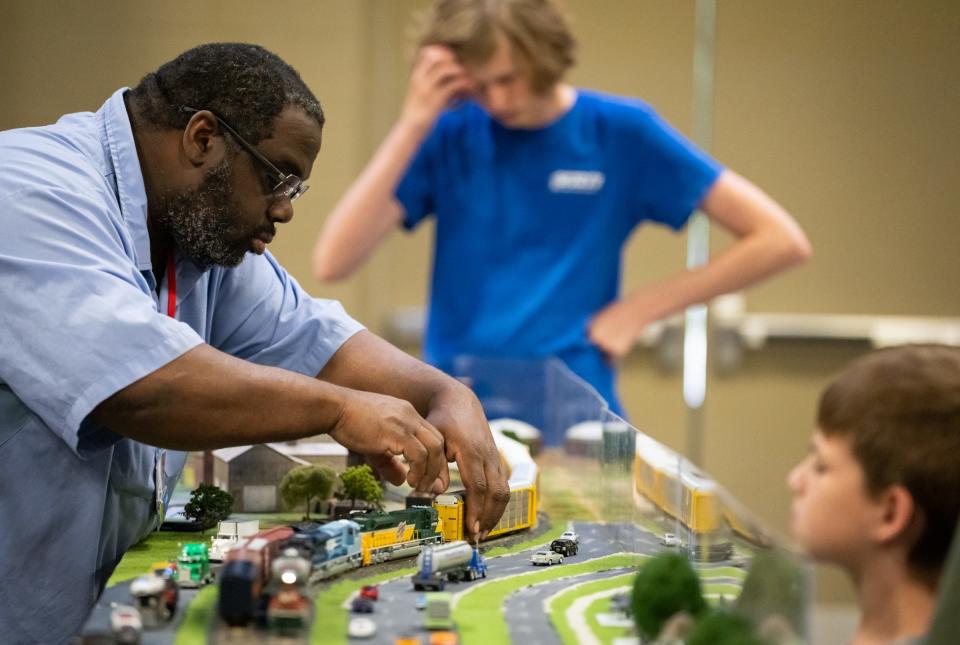
What model railroaders do
As with any human endeavor, model rail activity, which began in the 1840s, comes with its own language.
A crucial set of the railroading terms deal with scale. Hobbyists employ more than a dozen scales.
The most popular scale in America is "HO," sometimes rendered as "H0," or 1:87, meaning the layout and rolling stock are reduced from 1 foot in life to 3.5 mm in model format.
The name HO comes half of "0-scale," which was once the smallest scale and was introduced more 100 years ago. Some other popular options are "N-scale", half the size of HO, and "G-scale," twice the size of O-scale — the "G" comes from the word "garden" — and its tracks are laid outdoors using extensive landscaping.
"Seventy percent of model railroaders in this country use HO," Triggs says, "It's a manageable size that dates back to the 1930s."
More: Brick by brick: This Texas State Capitol made of Legos is no toy
"L-scale" refers trains and layouts constructed from Legos. At the Austin show, Texas Brick Railroad, a Lego train club, exhibited a vast layout of a colorful lands with windmills, woods and a refinery. It must have taken many hours to set up.
Just as interesting as the trains themselves are the landscapes — hills, rivers, forests, harbors — supplemental machinery — cranes, vehicles, signaling devices — and historical urban streetscapes, which is what the Austin Model Railway Society does so well.
More: The rise and fall of Austin streetcars
Some folks at the train show lent a personal "industrial age" insight into constructing these things.
"I worked on a real locomotive," says David Petersen, 74, who designed the benchwork for Austin club's basic layout and module construction. "The first time I was in a foundry, it was as a kid. When I grew up, I designed the machines that make concrete pipes. I helped fix the Bicentennial Freedom Train."
Before working on real locomotives, though, as a kid, with help from hid dad, Petersen built a big table on which they laid lots of Lionel tracks. Several of the railroaders at the show started out with their own sturdy Lionel toy trains, which have been produced since 1900.
In 2006, the National Toy Hall of Fame inducted Lionel's electric train as its first electric toy.
John Ames, 76, always had an interest in trains as a kid. He remembers his first long train trip at age 5 from Illinois to Houston.
"Now I take scenic trains when I'm on vacation," Ames says. "With model trains, you have all these electronics and sounds as well as remote controls. Anything you are interested in, you can find it in this hobby."
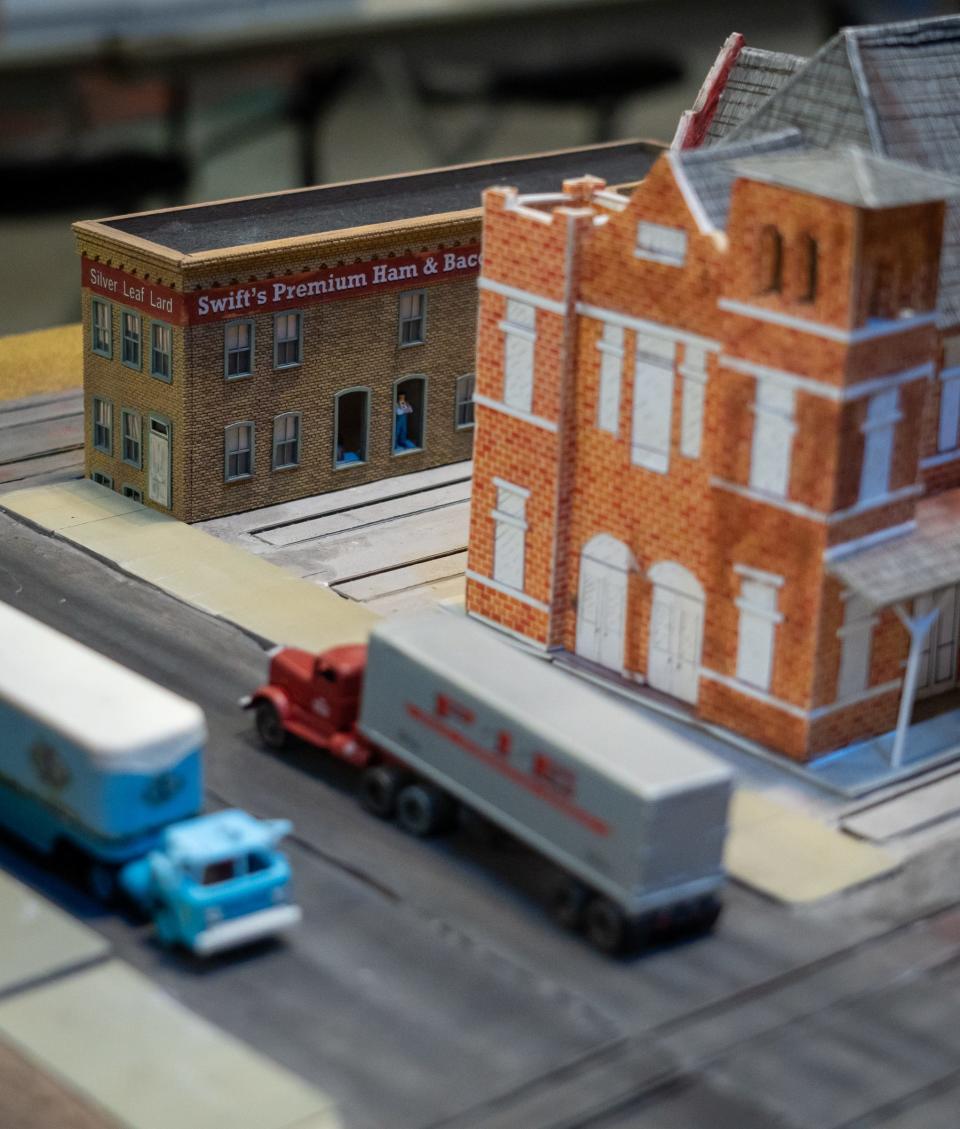
What is the Austin Model Railway Society?
Founded in 2017, the Austin Model Railway Society now lists about 30 members — men, women, old, young. Five years ago, they took over wheel of the Austin Train Show.
According to its leaders, the local club, a division member of the National Model Railroad Association, is organized loosely. Club members hold regular swap meets and attend model train shows in other cities. At these shows, one encounters scale-specific vendors, pop-up hobby shops and toy shops as well as booths that sell books and magazines and model trains.
"Most people operate a small home layout," Triggs says about club members. "We'd hang out at King's Hobby Shop up by North Lamar Boulevard and U.S. 183. We might buy from vendors at the train show or off the internet."
The club's main layout fits comfortably in the church gym. Some members linger inside the oval set of tracks. Others fiddle with pieces on the outer margins of the layout. When not being used, the whole kit and kaboodle is stored in a trailer.
More: Where did Austin’s railroads go?
In the smaller scales, one can shop for rolling stock at train shows or on eBay for $10 to $20 apiece. The hobby can be expensive, however, if you go all out at the biggest scales.
"A single locomotive might go for $3,000," Triggs says. "You can get into the hobby inexpensively by joining a club such as ours and get feel for what you like and how to do things. Then you can start to buy or build at a cost that is comfortable for you."
Folks into train nostalgia can branch off into other types of collecting: Historical dining services, locks from switch machines, railroad timetables and histories, just about anything related to trains. These days, some are making their model parts with 3-D printers.
"The hobby — like most — is more about people and community than the activity itself," Triggs says. "Friendship form through clubs like ours that will last a lifetime and even beyond to following generations."
Contact the club at austinrailway.org for info about next year's show and regular monthly meetings.
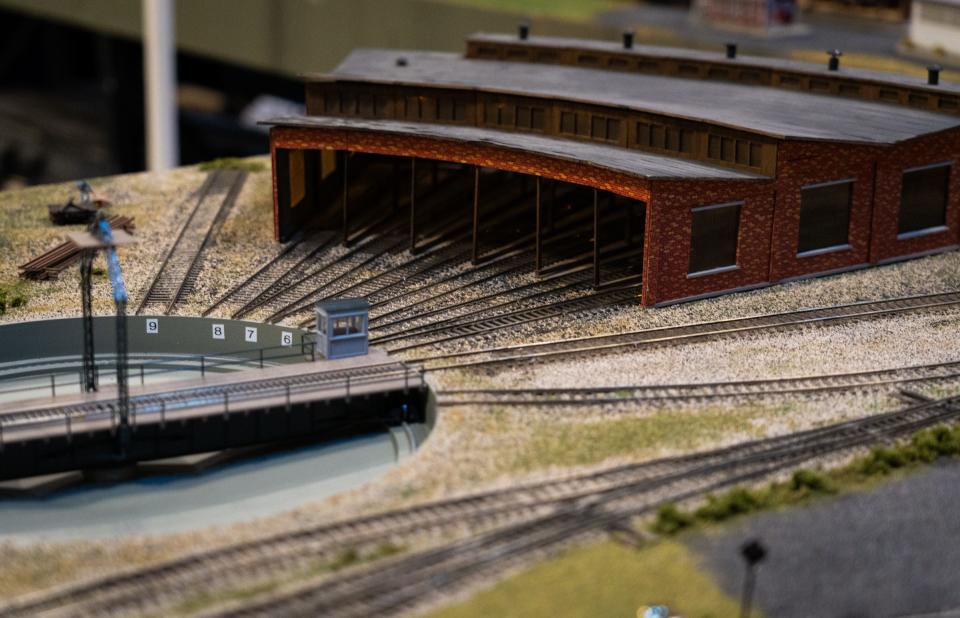
Learning Austin history from model trains
To anyone with an interest in Central Texas history, the most remarkable aspect of the club's train layout is how carefully the buildings along the tracks resemble the originals as they stood in 1956, in other words, at the end of the golden age of American railroads.
All these buildings come with stories, which are shared around the track. Included among the modules is a semicircular roundhouse used for storing and repairing steam locomotives, that once stood in East Austin.
"We used Sanborn Insurance maps to match buildings to locations," says club member Pedro Reyes. He refers to the invaluable historical research tools, fire maps that were made every few years of almost every structure in a city from the 1860s to the 1950s.
Sanborn maps are available online at the Perry-Castañeda Library site and elsewhere.
More: The Statesman has had more than a dozen homes and a Sanborn map shows one
And one can find out more about the origins of Austin today by just paying attention to the layout. For instance, one unfamiliar brick building by the tracks downtown is identified by its large sign: "Swift's Premium Ham and Bacon," which inspired the name of the popular restaurant Swift's Attic.
Also prominent is the low structure what became Spaghetti Warehouse, then Capital Grille and Parker Jazz Club. There's the Walker's Austex Chili factory, whose Hispanic employees lived nearby in the western sector of downtown. Another crucial Texas business that needs no explanation during the summer: Southwestern Ice and Cold Storage, then one of the biggest factories in downtown Austin.
More: How Austin popularized Tex-Mex food through companies like Austex
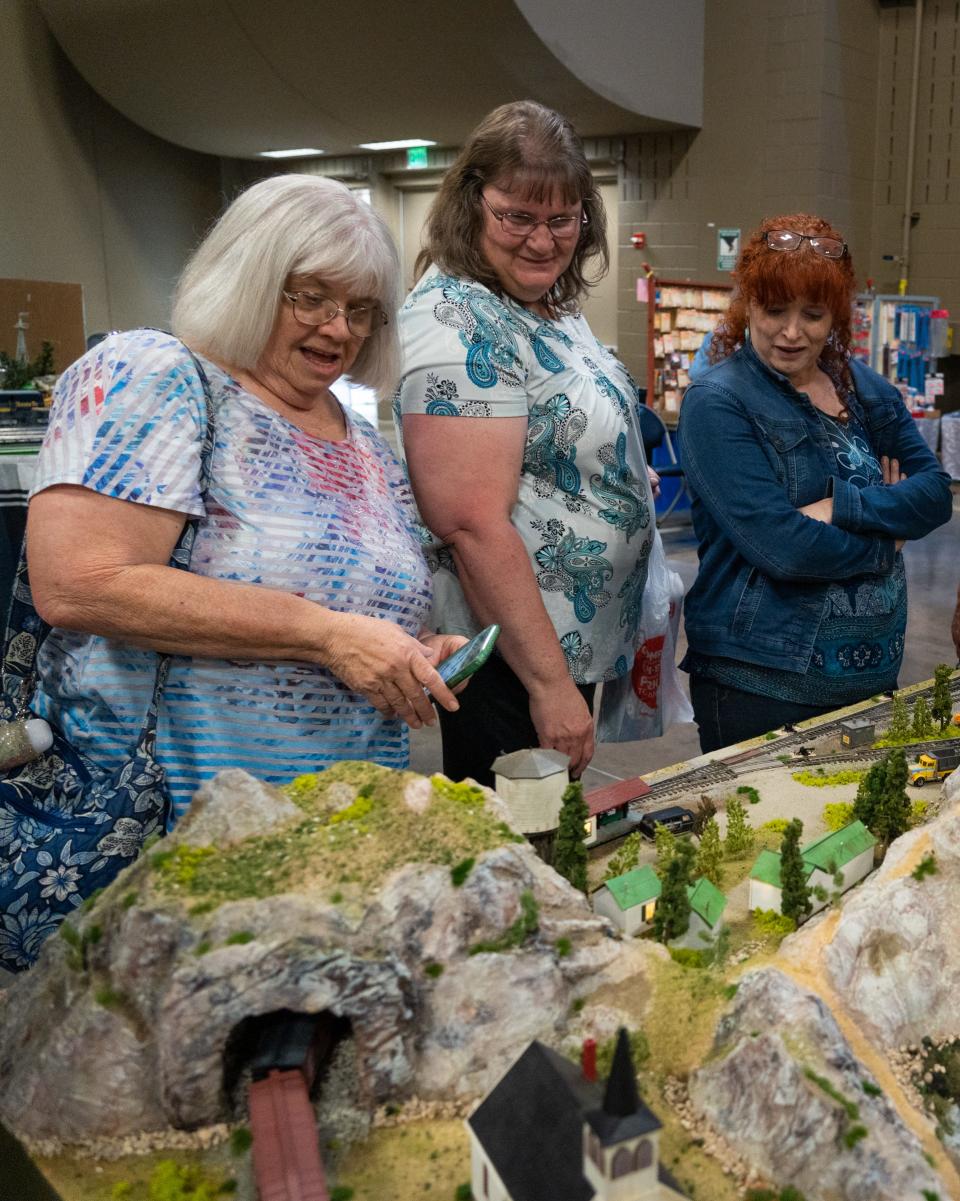
One could spend hours examining these historical models and discussing their stories.
At an appointed hour, however, after a free-running session, the organized operations begin with simulating real tasks, and under the best circumstances, on time.
"We operate the trains as if they were part of a railroad," Triggs says with a smile. "We look at all the historical paperwork and run it on the historical facts. We learn about different industries, mining, factories, passengers. All so we can produce an accurate representation on the other end.
More: Texas History: Giant 1940s steam locomotive, Big Boy, steams around Texas
"Model railroading has everything — artistic imagination, meticulous craftsmanship, precision engineering, elaborate electronics, intricate operations, programming computers, historical recreation," says Steve Jackobs, current president of the Austin Model Railway Society and an Austin Community College trustee. "You can dabble in everything or immerse yourself in one. It can be a social event with 30 people or one person alone late at night.
"One way or the other, it’s a wonderful Zen."
Michael Barnes writes about the people, places, culture and history of Austin. He can be reached at mbarnes@statesman.com.
This article originally appeared on Austin American-Statesman: Austin Model Railway Society runs a model train show full of history

